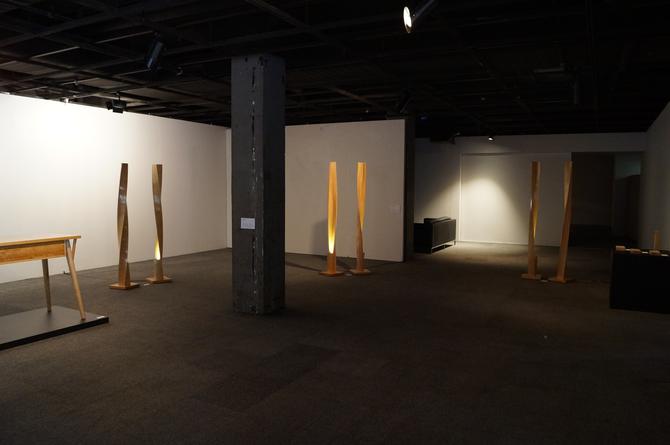New research has shown how plantation-grown eucalypt timbers, often shunned by industry and typically grown for pulp, can actually be used to create high-end furniture.
In the first commercial trial of its kind in Australia, second-generation woodcraftsman Phillip Blacklow’s PhD project assessed the potential of two plantation eucalypt species - blue gum (E.globulus) and shining gum (E.nitens) – in creating high-end furniture.
Most of Tasmania’s eucalypt plantations are managed to produce pulpwood. Grown at close spacing on 10-15 year harvesting cycles, they yield small-diameter trees with knots throughout the log.
Mr Blacklow said it was always considered inferior by high-end furniture makers, who have traditionally used old-growth native forest eucalypt timber to create products including fine furniture, craft work, mouldings, joinery and veneers.
“High-end furniture makers have only accessed minor species,” Mr Blacklow said.
“These species are shrinking in availability and the idea was to lift the level of acceptance of working with eucalypt.
Today’s price for eucalypt is $62/63 a cubic metre for pulp/paper. If we convert it to timber for furniture making it sits around $2,500/3,000.

Mr Blacklow is a technical officer at the University of Tasmania’s School of Creative Arts.
The research project compared the plantation eucalypts against the most commonly used eucalypt species, Stringy Bark E.obilqua.
His research looked at the viability of making fine furniture through a trial of 22-year -old plantation-grown shining gum and blue gum logs in North West Tasmania.
He employed all the manufacturing processes involved in furniture-making, including re-cutting, sanding, turning, gluing and finishing on plantation sawlog timber which had been grown, sawn and dried according to current best practise.
“Previous research done on plantation eucalypts that were only 15 years old, showed the product was not good enough to use for high-end purposes,” Mr Blacklow said.
My research showed by leaving the timber until 22 years of age, it produced a far superior material to work with.
“The difference between 15 and 22 years is massive in terms of having quality material available to make fine furniture.”
As part of his research project, Mr Blacklow held an exhibition of furniture pieces, including lamps, tables and stools, with the lamps being acquired for the University’s art collection.
Mr Blacklow said the results of his research had led to a second, larger trial being conducted.
The research has opened up a huge opportunity to use and market a product that was once primarily used for paper.
Interested in carving out your own research niche? Apply now to become a research student.
Keen to get creative? Apply now to study Art, Music and Theatre.
Phil Blacklow would like to acknowledge the assistance of Britton Timbers, Forestry Tasmania, CSIRO Division of Forestry and the ARC Industrial Transformation Training Centre for Forest Value in conducting this research.